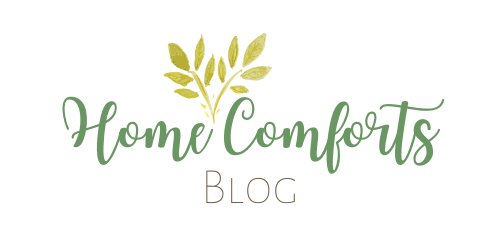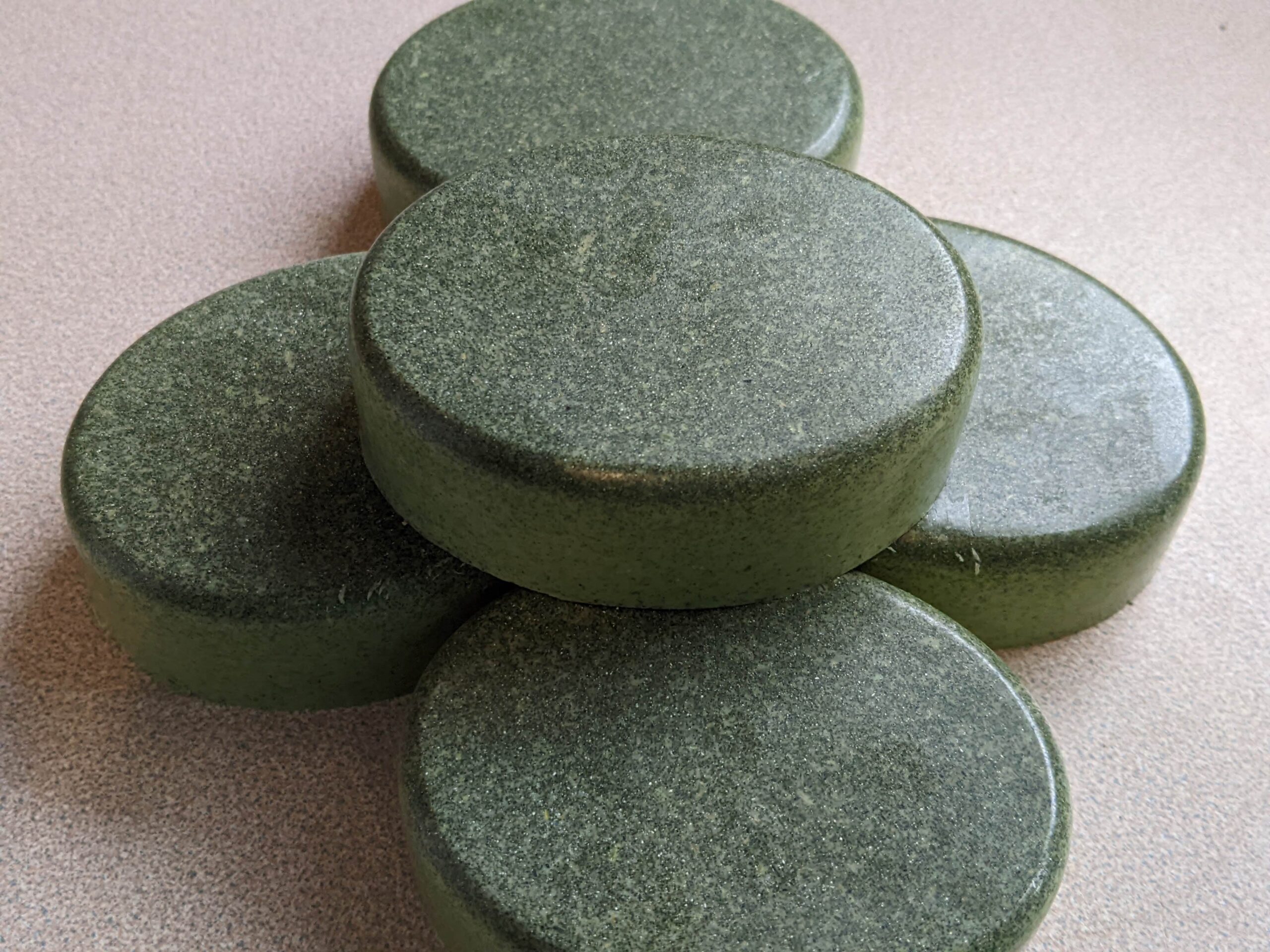Nettle Leaf (also known as stinging nettle or Urtica dioica) is great on the hair. Many people, including myself, have had good results using it in their hair care products such as rinses and leave in conditioners. It stands to reason, that if it offers such outstanding benefits for the hair, then it should also be good for the skin.
What is Nettle Leaf
Nettle leaf is a versatile ingredient that can be used in a variety of DIY skincare products, including soap. With a melt n pour soap, we can treat our skin to all the great nutrients found in nettle while gently cleaning our skin.
Stinging nettle is a plant that has been used for centuries in traditional medicine for its many health benefits, including its anti-inflammatory, antihistamine, and diuretic properties. When used in skincare products, nettle leaf is known for its ability to soothe and nourish the skin. This is due to its high levels of vitamins A, C, and K, as well as minerals like iron, magnesium, and calcium.
The Vitamin A in the nettle leaf helps keep the skin hydrated, promotes healing and helps to prevent breakouts. Nettle Leaf also has an astringent property that helps to shrink and tighten the top layer of skin and also helps to heal minor skin injuries.
Look at all the great stuff that nettle leaf does for your skin. Don’t get me wrong, I’m not suggesting that this is the only thing you need to improve your skin. We all know that skincare is a two-prong approach, it’s what you put in your body and well as what you put on it. However, this can be a great tool in your beauty care routine.
How to Make Melt and Pour Soap with Nettle Leaf Powder
Making melt and pour soap with nettle leaf is a fun and easy way to create a nourishing and beneficial product for your skin. In this blog post, we will guide you through the process of making melt and pour soap using nettle leaf powder. We’ll also share some of the benefits of making your own nettle leaf powder soap.
Melt and pour soap is an easy and beginner-friendly way to make soap at home without having to work with lye. Here’s how to make melt and pour soap with nettle leaf powder:
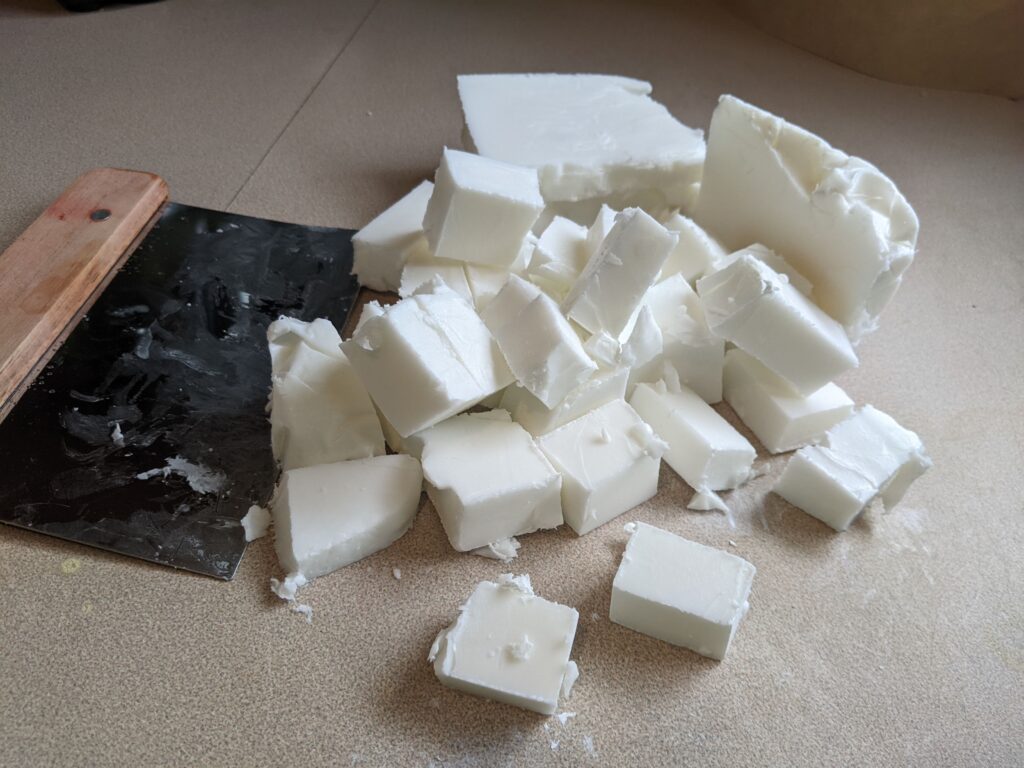
Grinding Your Nettle Leaves into Powder
To make your nettle leaf powder, use a coffee grinder to turn your nettle leaves into powder. Or, if you have a high speed food processor, you can easily grind your leaves into a fine powder. There may be a few twigs or stems left. You can remove by sifting your powder through a mesh or sieve.
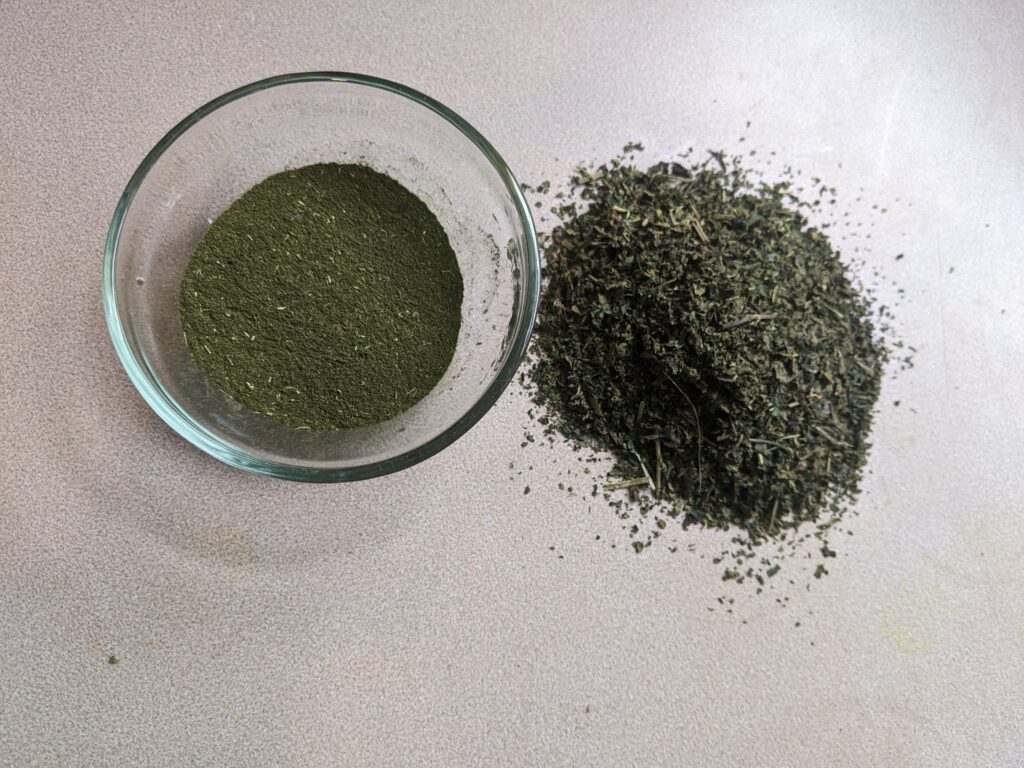
Ingredients:
- 1 pound of melt and pour soap base
- 1 tablespoon of nettle leaf powder
- 15-20 drops of essential oil (optional)
- Soap molds
- Spray bottle filled with rubbing alcohol
- Double boiler or microwave-safe bowl
Instructions:
- Cut the melt and pour soap base into small cubes and place them in a double boiler or microwave-safe bowl. If you use the microwave to melt your soap, melt in 30 second bursts and stir each time.
- Melt the soap base over low heat, stirring occasionally, until it is fully melted.
- Add the nettle leaf powder to the melted soap base and stir until it is fully incorporated.
- Add 15-20 drops of your preferred essential oil, if desired, and stir again.
- Pour the melted soap mixture into soap molds. Lightly spray the surface of the soap with rubbing alcohol to remove any air bubbles.
- Allow the soap to cool and harden for several hours or overnight.
- Once the soap has fully hardened, remove it from the molds and use it as desired.
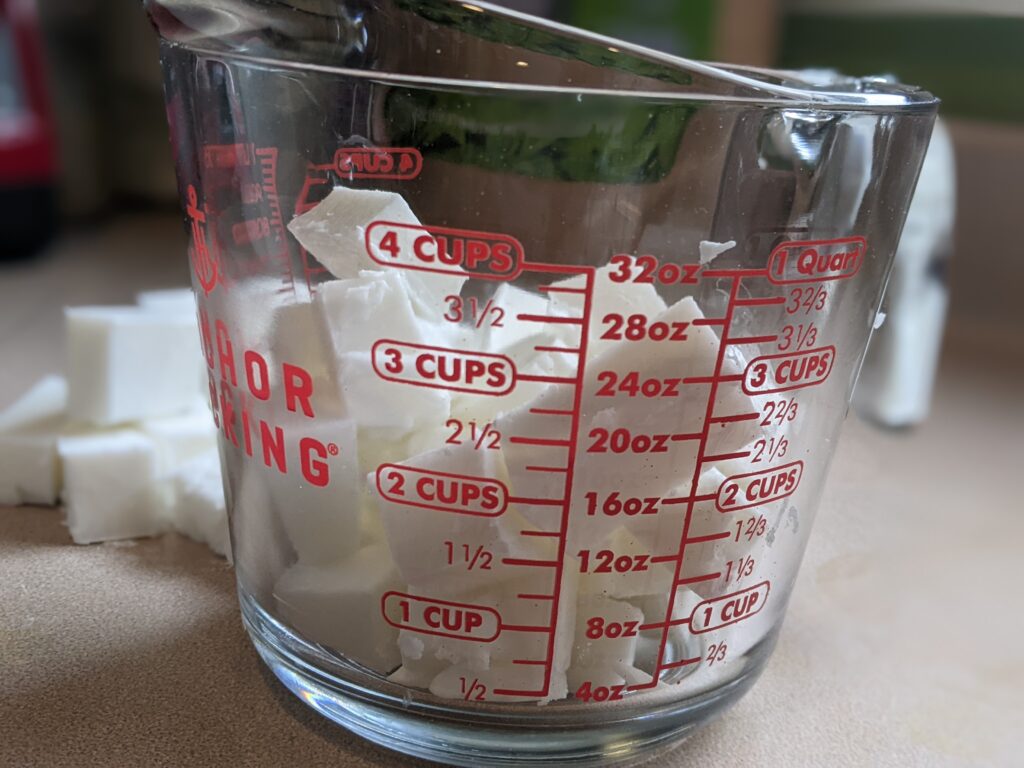
Essential Oils are Optional but very Beneficial
Adding essential oils is optional but there are many skin-nourishing essential oils that can be added to enhance the soap’s benefits. And there’s nothing more self-nurturing than the healing scent of essential oils during bath time. I love having a bar of lightly scented soaps to use in my bath or shower. Here are some examples of different oils you could use and the benefits of each:
- Lavender essential oil – known for its calming and soothing properties, can be helpful for reducing skin irritation and inflammation.
- Tea tree essential oil – known for its antibacterial and antifungal properties, use for acne-prone skin.
- Frankincense essential oil – known for its anti-aging properties, can be helpful for reducing the appearance of fine lines and wrinkles.
- Rose essential oil – known for its hydrating and anti-inflammatory properties and can be helpful for dry and sensitive skin.
- Geranium essential oil – known for its balancing and rejuvenating properties and can be helpful for oily and combination skin.
Keep in mind that essential oils should be used with caution as they can cause skin irritation or other adverse reactions if not used properly. It’s recommended to use no more than 1% (approximately 1 teaspoon per pound) essential oil by weight in a soap recipe.
This recipe will yield approximately 3 – 5 bars of soap, depending on what type of mold you use. Your bars will be a light mint color. However, some of your powder may settle to the bottom of the bar making one side a little darker. That’s okay. Use the darker side for a more intense treatment for skin irritations, cuts, or bruises.

Benefits of Making Your Own Nettle Leaf Powder Soap
Making your own nettle leaf powder soap has many benefits, including:
- Nourishing for the Skin: Nettle leaf powder is known for its ability to soothe and nourish the skin, making it an excellent ingredient for soap.
- Customizable: When making your own soap, you can customize it with essential oils or other ingredients to suit your skin’s needs.
- Cost-Effective: Making your own soap can be more cost-effective than buying expensive store-bought options.
- Environmentally Friendly: Making your own soap means you can avoid plastic packaging and choose eco-friendly ingredients.
- Fun and Creative: Making your own soap can be a fun and creative activity, allowing you to experiment with different scents and textures.
In conclusion, making melt and pour soap with nettle leaf powder is an easy and enjoyable way to create a nourishing and beneficial product for your skin. With just a few simple ingredients, you can make a custom soap that will leave your skin feeling soft, smooth, and healthy. Plus, the benefits of making your own soap go beyond just skincare – it’s a fun and creative activity that can be eco-friendly and cost-effective too. So why not give it a try and see the benefits for yourself?
Reference(s)
